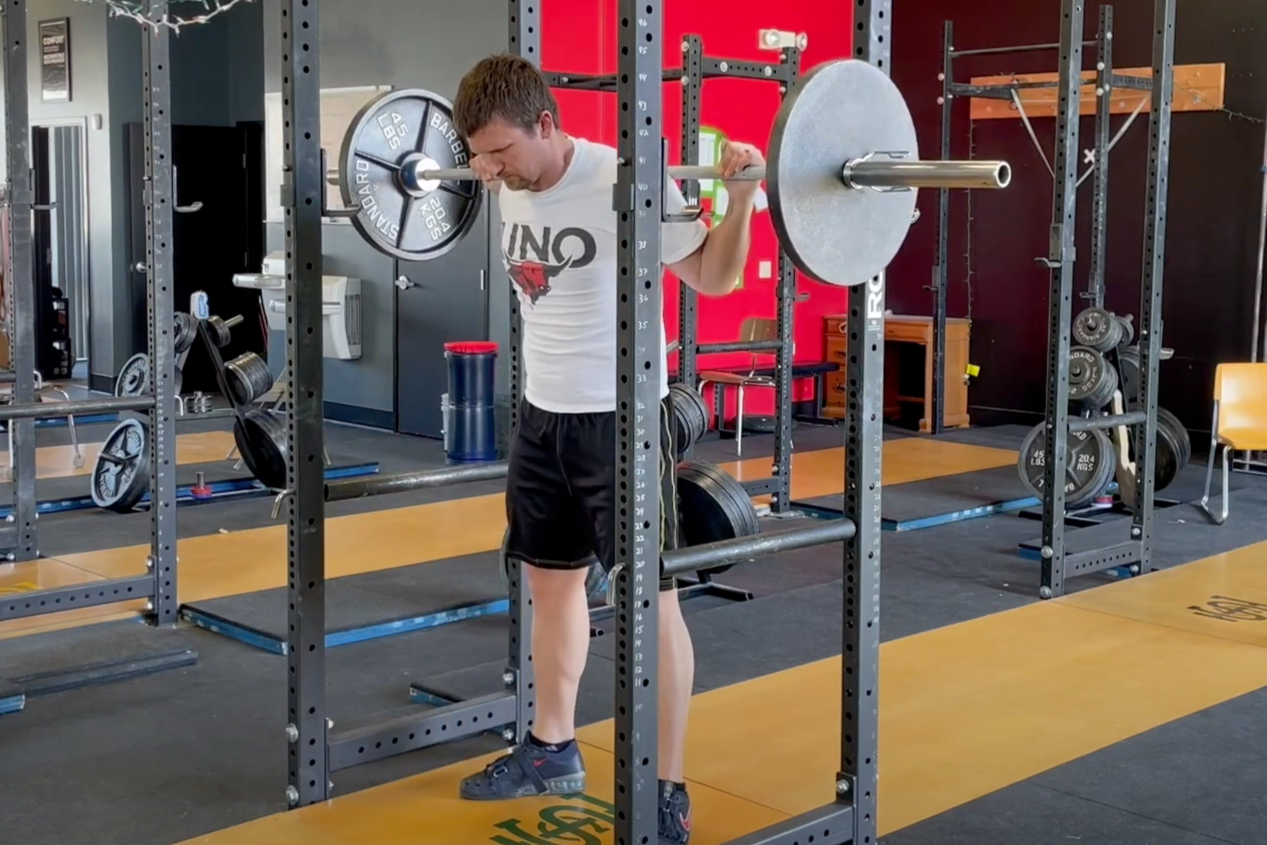Do These FOUR Things When Starting Strength Gets Hard... (plus 3 bonus tips)
/What do you do when Starting Strength gets hard?
Specifically, we’re discussing the Starting Strength Novice Linear Progression, but this advice applies generally to people at all stages of their lifting careers.
The Situation
You’re a couple of months into the linear progression, and lifting has gotten challenging indeed. You finish your first work set of squats, and you’re flabbergasted, “Son of a gun, that set was significantly harder than I expected it to be!”
In this situation, what do you do?
3 Bonus Tips First
First, make sure you’ve taken care of “The First Three Questions.” You can go more in depth and read Mark Rippetoe’s article on this topic by clicking here, but in brief, you need to make sure you’re doing the following:
Resting an intelligent amount of time
Are you resting 2-3 minutes between work sets? Don’t do that. You need to rest a sufficient amount of time between work sets, and for a hard-working lifter like yourself, 2-3 minutes is ridiculously too short of a rest period.
Making intelligently-sized jumps regarding the load on the bar
If you’re a few months into your linear progression and you’re still trying to add 10 lb to your squat and deadlift each session, and you’re still trying to add 5 lb to your press and bench each session, you’re going to have problems. Make smaller jumps, e.g., 5 lb on the squat and deadlift and 2.5 lb on the press and bench.
Taking care of your recovery
In short, make sure you’re sleeping and eating enough.
Assuming you’ve taken care of these issues, there are four things to do when the novice linear progression gets hard.
#1: Check your book.
Take a second look at your training log - you may have read it incorrectly. Perhaps you were supposed to squat 205 lb today and you mistakenly thought you were supposed to squat 215 lb (and thus you loaded the barbell 10 lb too heavy). Perhaps you were supposed to press 75 lb, but you accidentally loaded up your bench press weight and tried to press that (it happens frequently).
Check your book and make sure that what you intended to lift today is actually what’s on the bar.
#2: Check your bar math.
Maybe you meant to load 145 lb, but you accidentally put a 10 lb plate on each side instead of a 5 lb plate, thus ending up with 155 lb. If 145 lb was already going to be tough, then 155 lb will be a problem indeed.
If you tend to make loading errors and are doubting your math, ask your training partner (or someone else in the gym) to tell you what’s on the bar once it’s loaded. If their answer matches your plan, then you’re probably good to go.
#3: Check your bar symmetry.
In other words, make sure the left side of the bar is loaded the same as the right side of the bar. If you meant to load 155 lb, and you put a 45 lb plate and a 10 lb plate on one side, but you accidentally only put a 45 lb plate on the other side (i.e., you forgot the 10 lb plate), this makes the load asymmetrical, which makes for a tougher set.
Ideally, you’d check these three items before starting your work sets, but at the very least, be sure to check them when things are harder than expected. You might be surprised how often one of these three errors is the culprit.
#4: What if #1, 2, and 3 aren’t the problem?
In this case, check the calendar. If the day of the week ends in the letter “y,” then you simply move on and do the next set.
It’s challenging and it’s hard, but then again, it’s supposed to be hard. This is how you make progress.
In Mark Rippetoe’s words, “Easy doesn’t work.”
It will still be hard two months from now - your 205 lb squat in a month or two will be about as hard as your 135 lb squat was today, but because you can now squat 205 lb, your old 135 lb squat is now just an easy warm-up because You. Got. Stronger.
When I find myself in a situation like this, it also helps me to remember that this is a first world problem. I have food in my belly, I have a place to sleep at night, and training is a privilege. Keeping that in mind certainly helps provide perspective.
As always, we hope this helps you get stronger and live better.
-Phil
PS: Whenever you want even more Testify in your life, here are some free resources:
Book a free intro and strategy session with us HERE.
Pick up a free copy of Testify’s Squat Guide: 12 Tips to Improve Your Squat Now HERE.
Get our free weekly email - containing useful videos, articles, and training tips - HERE.
Follow Testify on Instagram HERE.
Subscribe to Testify’s YouTube channel HERE.
(Some links may be affiliate links. As an Amazon Associate, Testify earns from qualifying purchases.)











